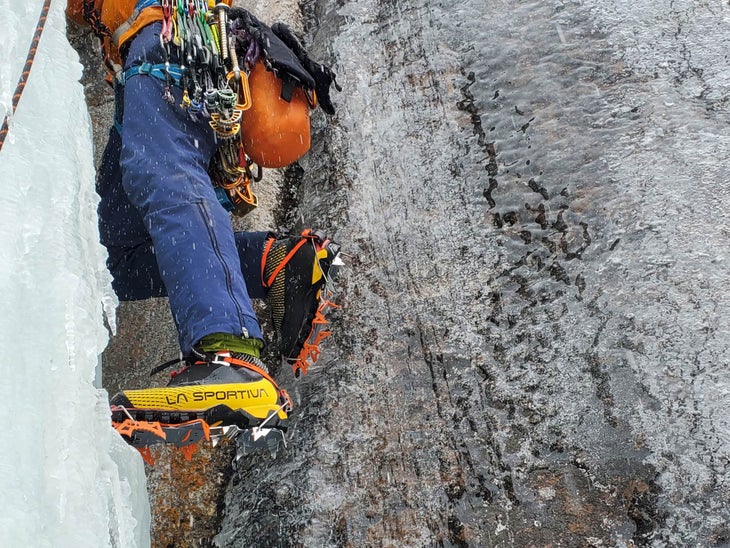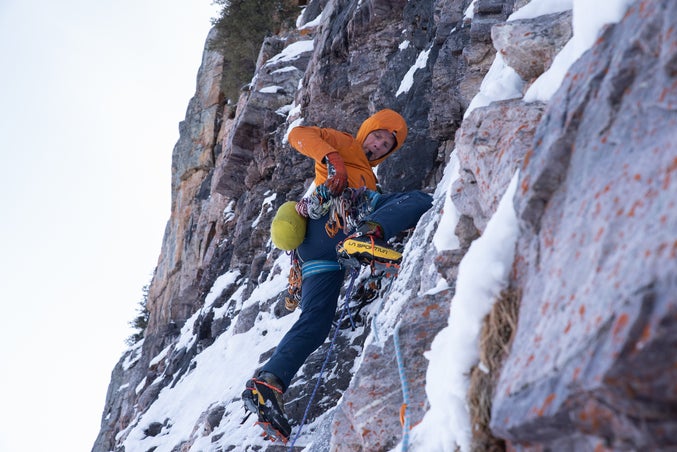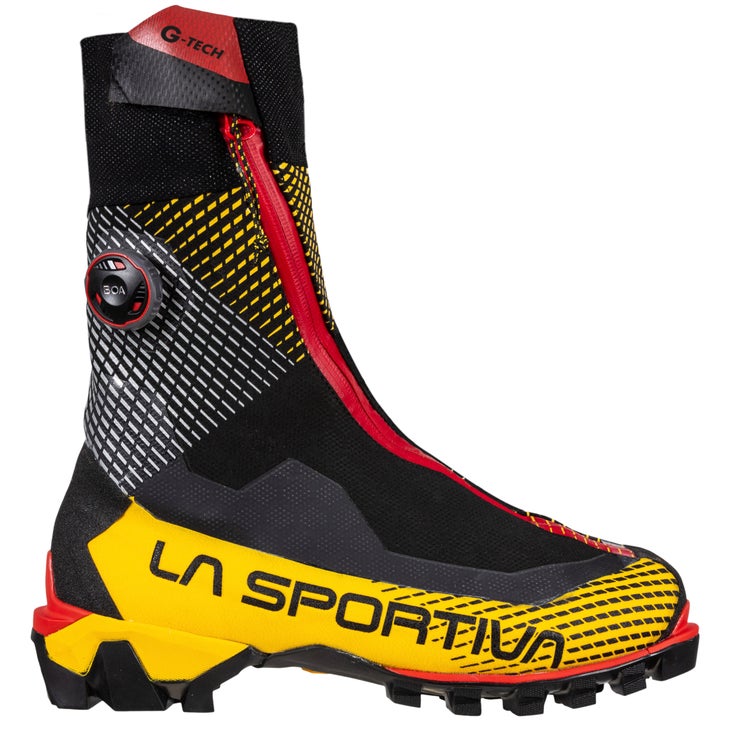Weight
1,240g (pair)
Price
$769
Brand
La Sportiva
“], “filter”: { “nextExceptions”: “img, blockquote, div”, “nextContainsExceptions”: “img, blockquote, a.btn, a.o-button”} }”>
Heading out the door? Read this article on the new Outside+ app available now on iOS devices for members!
>”,”name”:”in-content-cta”,”type”:”link”}}”>Download the app.
At the start of last winter I was sent a pair of the new La Sportiva G-Tech boots with the vague idea that I would review them. At first glance, eyeing their thin, non-removable liner, I figured they would collect dust for most of the winter—I am a full-time alpine guide in the infamously cold Canadian Rockies, and double boots are absolutely standard for the majority of the season. So with the proviso that I would likely only use them for cragging and the warmer shoulder seasons, I eagerly accepted what looked like Ferraris for my feet.
However, after an early cold snap to the winter, and most of a spring of testing (and a January and February where I traveled to milder ice-climbing destinations and used them exclusively) the G-Techs actually became my go-to ice boot. I found them to be far more protective than my previous pair of low-cut light boots, thanks to their full-height gaiter, and so much lighter, more comfortable, and nimble than my stand-by doubles.
When reviewing a pair of mountain boots after a full winter of use and the only negative I can think of is that they provide a less stable (narrower) platform for ski approaches, in Silvrettas mounted on 110 mm waist skis, I know I have found a product that is a category leader—with one notable asterisk.

As I age and my fitness wanes from enjoying the good life, I found the G-Techs’ light weight translated into noticeably less effort on days with lengthy approaches. Cyclists go out of their way to source light wheels; a pound on the feet is more than a pound in the sack. My doubles were relegated to days of standing around while guiding safety and instruction, and even here I found the thinner boots more comfortable as the sole seems anatomical compared to the flat platform of my older double boots. Admittedly I did skip February in the Rockies, returning to -37 Celsius after a month of traveling and climbing.
At New Hampshire’s Cathedral Ledge, trying to learn the dark art of granite crampon placement, the narrower profile of the G-Techs made it seem easier to scan below my feet for placements; there is less boot to block one’s view. As a limestone mixed climber, used to plentiful edges, I need all the help I can get. And when I asked the legendary local Kevin Mahoney for footwork tips, his advice of “high feet and lean out” was easier to achieve thanks to the boot’s feather-light weight. When I next went to Michigan and kicked up steep ice, it was easy to switch crampons as the G-Techs’ narrow toes accept modern asymmetrical bails well.

I have tried to identify what I would change about the design of the G-Techs and have come up short. The designers have put a lot of thought into perfecting features. At an ungodly hour in a cramped bivy tent on a slippery mat, I found the zipper to be positioned such that it is easy to do up from nearly any position, and seems to be more robust than a certain type of common waterproof zipper which has a history of failure with use. The pull tab on the inside back of the boot is wide and easily grasped, making pulling the boots on easy. A wide inner velcro strap secures the liner-throat comfortably, held in place by a well-placed positioning strap. I also found the BOA system to be a worthy replacement of traditional laces: though I don’t fully understand how it achieves such an even pressure over my foot while climbing, I found it incredibly efficient, and enjoyed the easy tension release to keep my feet warmer at belays.

After 50-60 days of winter climbing the only self-inflicted wear on the boots was from when I was foolishly kicking a limestone pedestal at a long semi-hanging belay, relieving tedium by making a larger stance in the decomposing choss. I am told the boots are resoleable, and the small chips on the stiffening sole plate just above the tread could be replaced at that time. But as the season wound down a sudden material weakness did appear: the rubber rand began to delaminate from the instep of the fabric of the boot. This delamination could prematurely weaken the boot’s structure and weather-proofness, and is difficult to remedy at home.
Apart from this one issue, I was more than happy to sport the G-Techs as much as I could this winter. They felt much more like shoes that I wouldn’t eagerly shed at the end of a day, and I expect to be comfortably wearing them for years to come.




